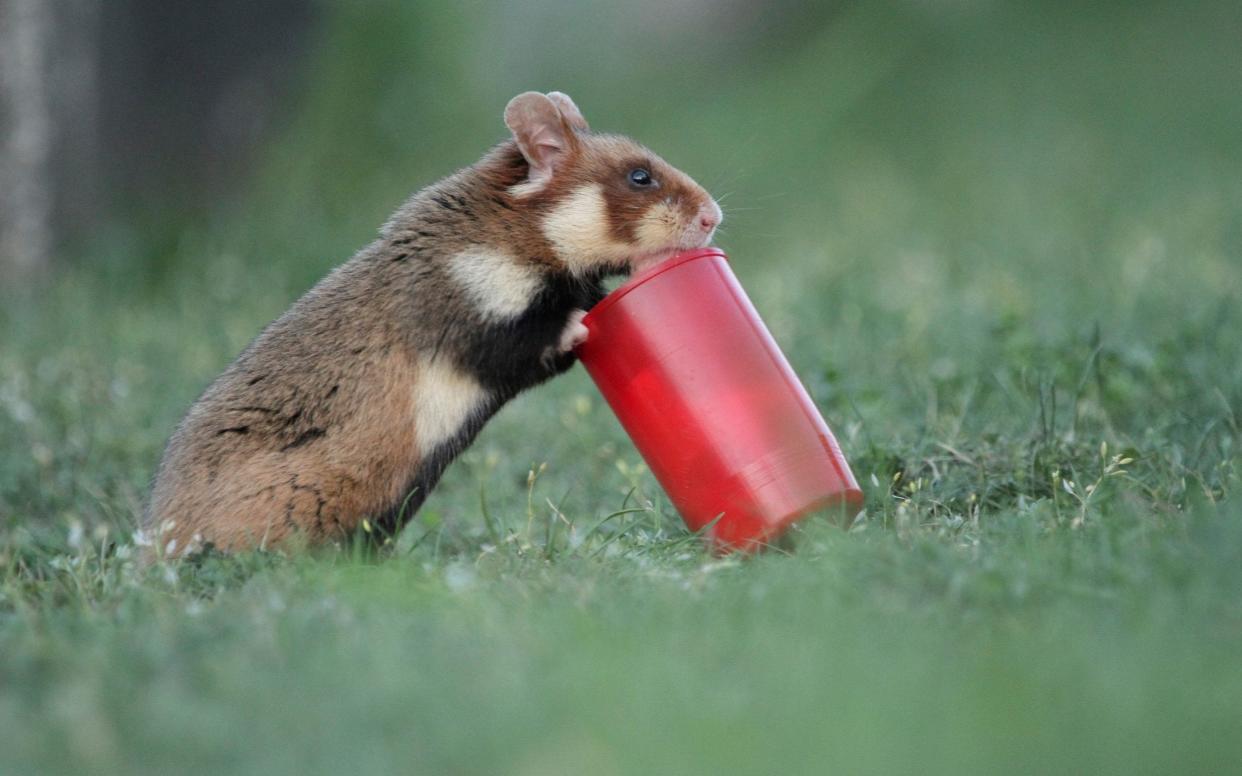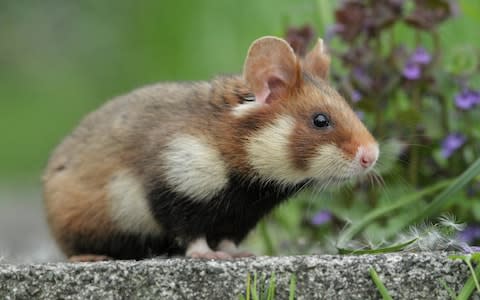Seven Worlds, One Planet: Europe recap: an overly ambitious hamster was the comic relief in another awe-inspiring episode

It’s been a good week for Sir David Attenborough, who received yet another award to put alongside his knighthood and 32 honorary degrees.
The Queen put her Prince Andrew-based troubles aside earlier on Tuesday to surprise her old friend and fellow 93-year-old with the Chatham House prize for his work raising awareness of plastic pollution in our oceans.
Attenborough’s current continent-hopping series might not be hitting the headlines like Planet Earth II and Dynasties, but it’s still pulling in impressive ratings of 8.5 million viewers each Sunday – even in a time-slot which is arguably too early.
This week’s episode came closer to home, covering Europe. We saw how our crowded continent, home to 850 million people, hides surprising animals in precious pockets of wilderness. Cue head-smashing fights, high drama and hamster farce.
Wild hamsters went from scrap to slapstick
Just don’t mention Freddie Starr or mistake them for gerbils. They get very offended. In the cemeteries of Vienna, it was unexpectedly entertaining to watch grave-robbing European wild hamsters – twice the size of the pet variety – do battle for food.
Two of the adorably fluffy rodents fought over a bouquet of fresh flowers – a tasty treat to fatten themselves up for winter. They stored the spoils in their chubby cheek-pouches, which can hold an impressive quarter of their body weight.
Coming at the episode’s halfway mark, this slow-motion dust-up was stunningly shot. As the furry kung-fu fighters leapt and tumbled in slow-motion, it resembled a balletic fight scene from a martial arts film. Crouching Hamster, Hidden Dragon, perhaps.

This was followed by a delightful comedy sequence when the victorious hamster helped himself to dessert: a nibble of candle-wax, which was full of oil and high in calories. However, our hero got a bit too greedy and found his head stuck in a red candle jar.
“Big cheeks and narrow bottlenecks,” twinkled Attenborough’s amused narration. “How very embarrassing.” After staggering around like Mr Bean or Monica from Friends with a turkey on their head, the hamster managed to free himself. Was it my imagination or did he look a little shamefaced?
Rare wolf footage was a revelation
Hungry like the wolf, anyone? In a bravura five-minute sequence, thermal imaging showed grey wolves hunting red deer in the dead of night on an Apennine mountainside in central Italy.
Through thermal cameras, the wolves’ noses appeared to glow white-hot. With little fur to cover it and unable to sweat, a wolf regulates its body temperature through heat lost from its muzzle.
The pitch blackness provided the perfect conditions for an ambush and we watched a long, thrillingly cinematic chase as the wolf pack pursued their chosen member of the deer herd. When the deer stumbled, it proved fatal – except the commotion attracted sheepdogs from a nearby farm, bred to protect livestock by chasing away wolves. The kill was lost, which hardly seemed fair.

As the “on location” epilogue demonstrated, finding these elusive predators is difficult enough, let alone filming them in action. The solution surprised everyone. The best place proved to be not in the wilderness but on the outskirts of villages, where the nine-strong pack roamed close to roads and houses, right under humanity’s noses but skilfully staying out of sight. A lupine version of our own urban foxes.
Muskox fight was enough to induce a headache
There have been some epic fights this series – the elephant seals, snow monkeys and sarada lizards spring to mind – and here we got another. In Norway’s Dovrefjell mountains on the fringes of the Arctic Circle, the open tundra echoed with the sound of headbanging muskox bulls battling for the right to breed.
In a titanic two-and-half minute sequence, one dominant bull protected his herd when another male arrived to challenge him. He raked the ground as a warning, bellowed and swung his shaggy head, before they both charged and butted. There were shuddering bangs and rippling coats as these half-ton beasts collided head-on with force. Fortunately, they have a 4in-thick helmet-like horn for protection.
At first, the gnarled old bull lost ground and looked to be broadsided. With one final effort, though, the experience campaigner pushed his challenger up the hill and saw him off. Need an aspirin and a nap, darling?

Lynx: not just a deodorant brand
Once teetering on the brink of extinction, the Iberian lynx is returning to the forest hills of southern Spain. Numbers have increased from fewer than 100 to 700 since a national park was created to help protect one of the world’s most endangered cats.
Intimate close-ups of these handsome, tawny-spotted felines with distinguished whiskers were captured by rigging up hidden camera traps and leaving them in the field for six months. We even saw some adorable kittens suckling and snuggling into their mother.
Like with the wolves, the biggest surprise for the Natural History Unit crew was how these shy predators were comfortable living alongside people in busy locations. Footage captured them trotting happily through motorway underpasses and gracefully vaulting over roadside fences. Now that’s the lynx effect.
Barbary apes starred in simian soap storyline
There was heart-wrenching high drama among Europe’s only primates, the Barbary macaques of Gibraltar, when one monkey suddenly kidnapped another’s child.
A lone young mother had just had her first baby when a higher-ranking childless female snatched the youngster and ran away with him, climbing 30 metres up a cable tower to escape. The mother gave chase but the kidnapper refused to surrender the baby.

Its mother played a canny game by grooming another macaque in full view of the kidnapper, who couldn’t resist joining in. The baby climbed back gratefully into his mother’s arms. A happy ending to a harrowing spectacle.
Cute bear cubs were briefly in danger
This week’s first slice of wildlife action took us to the far eastern edge of the continent, close to the Russian border. The vast forests of Finland are home to 1,500 brown bears and we watched a mother raising two cute-but-boisterous cubs.
She took a well-earned rest while they played: wrestling, gambolling and scratching their backs against trees, recalling Baloo from The Jungle Book.
There was a moment of jeopardy when a rogue male arrived in search of a mate but these nimble climbers swiftly shinned 15m up into the pine trees out of reach, while their protective mother chased away the threat. Smarter than the average bear.
Relax, Game of Thrones fans, it’s an olm
Deep underground in Slovenia’s plentiful caves – vast, atmospheric caverns, adorned with stalactites and stalagmites – lurked animals once believed to be baby dragons: olms, actually a sort of aquatic salamander.
These flesh-coloured, eel-like creatures, nicknamed “the human fish” by locals, were completely blind with feathered gills and sensory pits around their mouths. They could go without food for a decade and live for up to a century. Half-dinosaur, half-albino crocodile, all bizarre.
Together with the spectacular Hungarian mayfly sequence, it added up to an episode which embraced all creatures great and small. Next stop, North America.


